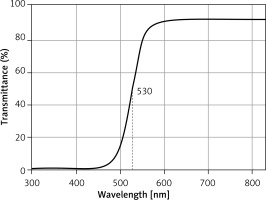Erythropoietic protoporphyria (EPP), is a rare, congenital autosomal dominant disease caused by an inherited gene mutation and low amounts of the enzyme ferrochelatase, which leads to a defect in heme synthesis and accumulate protoporphyrin mainly in red blood cells, plasma cells and bones marrow. Protoporphyrin is also stored in the liver and excreted to the bile. The accumulation of protoporphyrin is harmful and causes several health disorders. The frequency of EPP is estimated at 1 in 70,000 to 250,000 people. Nevertheless, patients with EPP, as well as the general population, may require surgery for other medical conditions. However, the typical and main symptoms of EPP are photosensitivity and phototoxicity to intense light, predominantly in the blue-violet region around 400 nm. Under intense light within the skin there are typical skin syndromes (so-called painful sensitivity to sunlight) such as stinging sensation, redness, swelling or even ulceration.
It is caused by the nature of protoporphyrin – a substance which absorbs sunlight or electric light in the light wave spectrum from 320 to 595 nm. After light energy absorption, protoporphyrin degenerates and releases free radicals causing a phototoxic injury to either skin or abdominal organs [1–3].
Certain publications and case reports confirm that high intensity operating lights are hazardous in EPP and cause many postoperative complications such as multiple intestinal perforations, biliary fistulation, duodenal ulceration, severe burns to the abdominal or skin necrosis [4].
Therefore, in order to protect from phototoxic injuries, in patients with EPP who require surgical procedures, protective filters are used to eliminate the most harmful wavelengths in the blue-violet range from the surgical lights [3, 5].
In open surgical procedures, especially in a liver transplantation, factory-made filters are used and are imposed in operating lamp binding and work well. On the other hand, we could not find such filters for laparoscopic procedures. That is why we devised the proper shape and size filter, OG 530, which guarantees photoprotection (Figure 1). We used it in the visual track of the Olympus mark in a junction between the optical fiber and the camera. At the beginning it did not work because it was impossible to join the rifled part of the camera and the optical fiber. We solved the problem by using a medical adhesive tape which ensured a proper and stable junction between the camera and the optical fiber. Due to this solution we operated on three patients without any complications. Laparoscopically, two cholecystectomies were performed due to cholelithiasis and one sigmoidectomy because of large bowel cancer. The filter had a moderate influence on color perception and caused no significant restrictions on working conditions. The surgeons did not consider visibility or working conditions significantly impaired when they worked under the filter. In the postoperative period, no symptoms related to phototoxic injury were observed. That is why we consider it appropriate to develop a relevant design to meet the suitable requirements for a durable filter holder in the laparoscopic video track.









